Nashville restaurateur Tom Morales is a man on a mission. In fact, the owner of local favorites The Southern Steak & Oyster, Southernaire Market, Acme Feed & Seed and Woolworth on 5th has a very specific mission statement for his seafood restaurant Fin & Pearl: “Create a sustainable, Earth-friendly seafood restaurant in both our practices and buying strategies while communicating with our customers honestly and with transparency. We hope to inspire others to embrace these simple tenets through our culinary efforts and a kind, hospitable attitude.” Through his investments in sustainable practices, Morales is hoping his customers will join him in putting their money where their mouths are.
Morales’ interest in protecting the bounty of the sea comes from an honest place, based in his family background. “My father was from the Dominican Republic,” he explains. “So I have island blood in me and a real love for the sea. Growing up on Dauphin Island in Alabama, my fondest memories were spending my summers crabbing and swimming off the dock to spearfish for sheepshead. Some of my last experiences with my father were taking him out fishing, and I really want to preserve that as a pastime and as a livelihood for the future.”
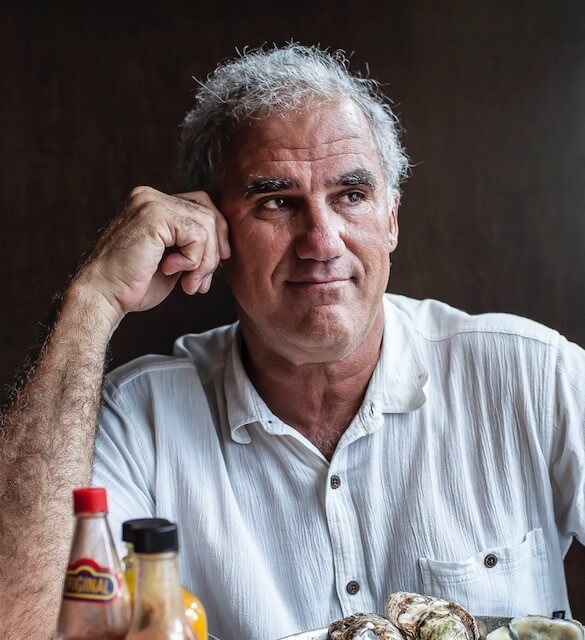

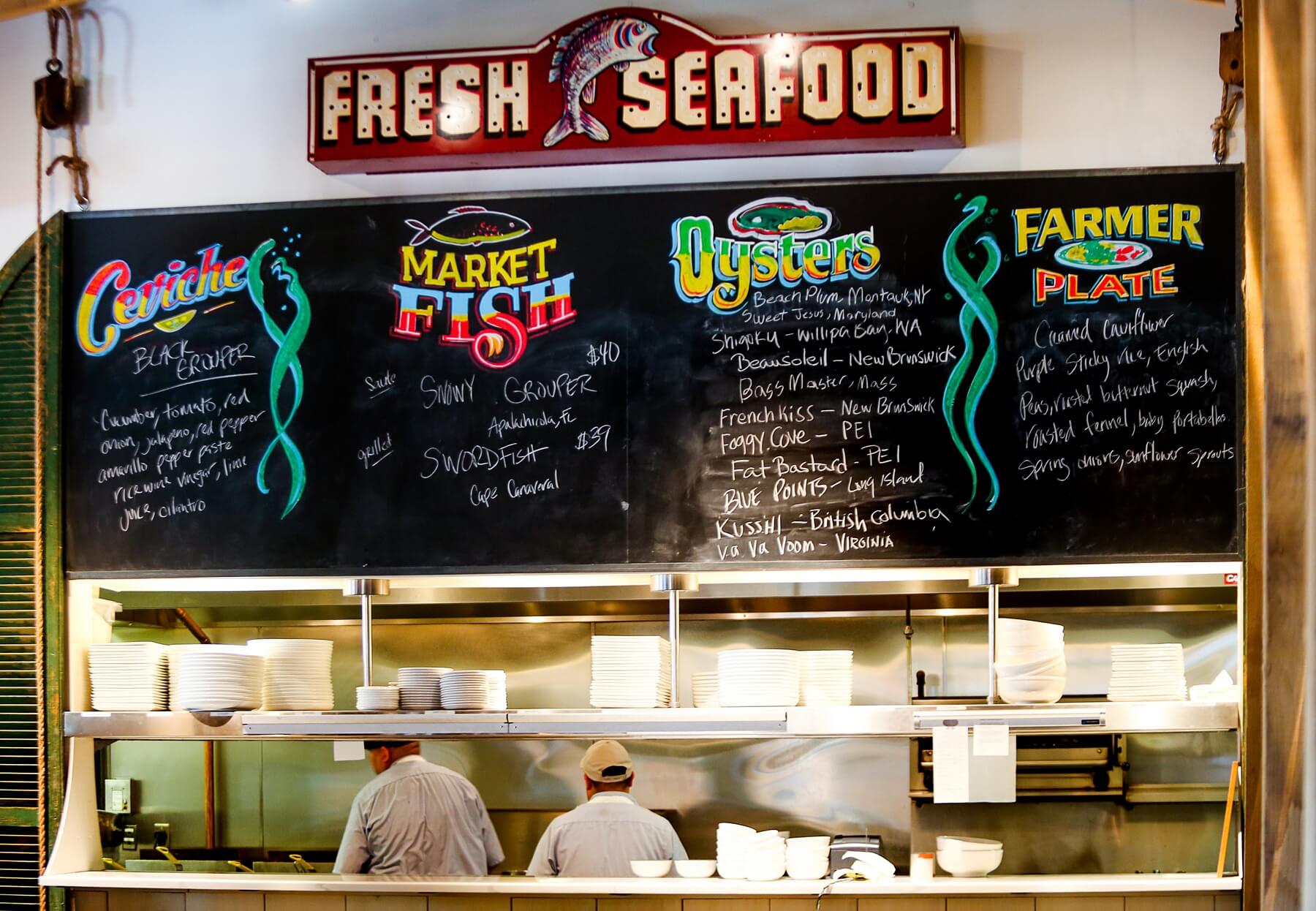

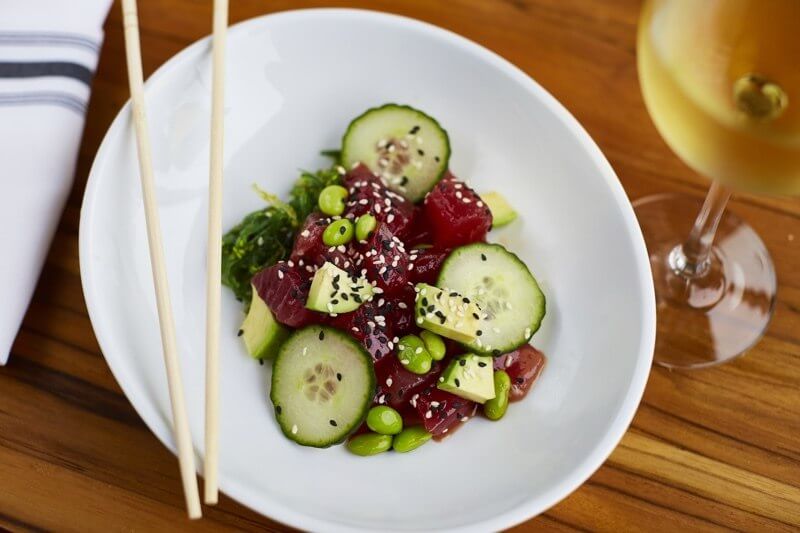
Commercial fishing is one way to maximize the efficiency of the industry, but it isn’t necessarily the best practice for the preservation of the sea. Morales knows how difficult it can be to make a living fishing. “ When I lived in Destin, some of the fishermen I worked with would go out for two weeks at a time, setting out 25 miles of long lines to catch swordfish,” he explains. “Americans fish like individual entrepreneurs as opposed to other countries. Japanese fishermen might set out literally 1,000 miles of lines, and there’s just too much by-catch in those practices. Bluefin tuna are pretty much gone from the Mediterranean because they would use airplanes to spot schools that were breeding and circle the whole school with nets. Not only were they taking all the fish, but they were also not allowing them to successfully breed to extend the life of the species.”
At Fin & Pearl, Morales pledges to work with purveyors that sell the highest quality seafood caught by smaller independently owned boats that commit to the sustainability of the supply of the species they fish for. The restaurant follows the guidelines put forth by the National Resources Defense Council and the Monterey Bay Aquarium Seafood Watch programs to ensure that they are sourcing and serving sustainable seafood.
This dedication is not easy, and it’s not always cheap either, but Morales remains steadfast in his commitment. “Sustainable seafood comes at a cost,” he explains, “but it’s a true cost. What I mean is that paying to ship fish from around the world may be a cost, but doing the right thing of choosing products that represent the best practices is a true cost. I can buy cheap tilapia raised in a sewer pond, but it’s not right. I can get salmon that has been fed dyes to change the color of the meat, but we prefer wild-caught salmon over farm-raised. Our job is to teach people to eat all sorts of seafood, and the culinary challenge is for our chefs to present these unfamiliar fish in an attractive manner.”
Fin & Pearl chef de cuisine Kevin Powell is proud to take on that challenge. “We spent a lot of time finding the right vendors starting out, but once we hooked up with the right mongers and opened communications about what we’re looking for, the suppliers came to us in droves.”
Morales adds, “Buying from these vendors also means we’re getting the premium fish.”
Powell concurs. “You can’t beat the quality. We order three times a week from some vendors and twice a week from Honolulu. Luckily, Honolulu includes the cost of shipping into their pricing, and we’re willing to pay extra for quality and to protect the fishing grounds. Since we’re particular about what we buy, we can change our fresh catch several times a week to challenge ourselves creatively to come up with something new for our customers.”
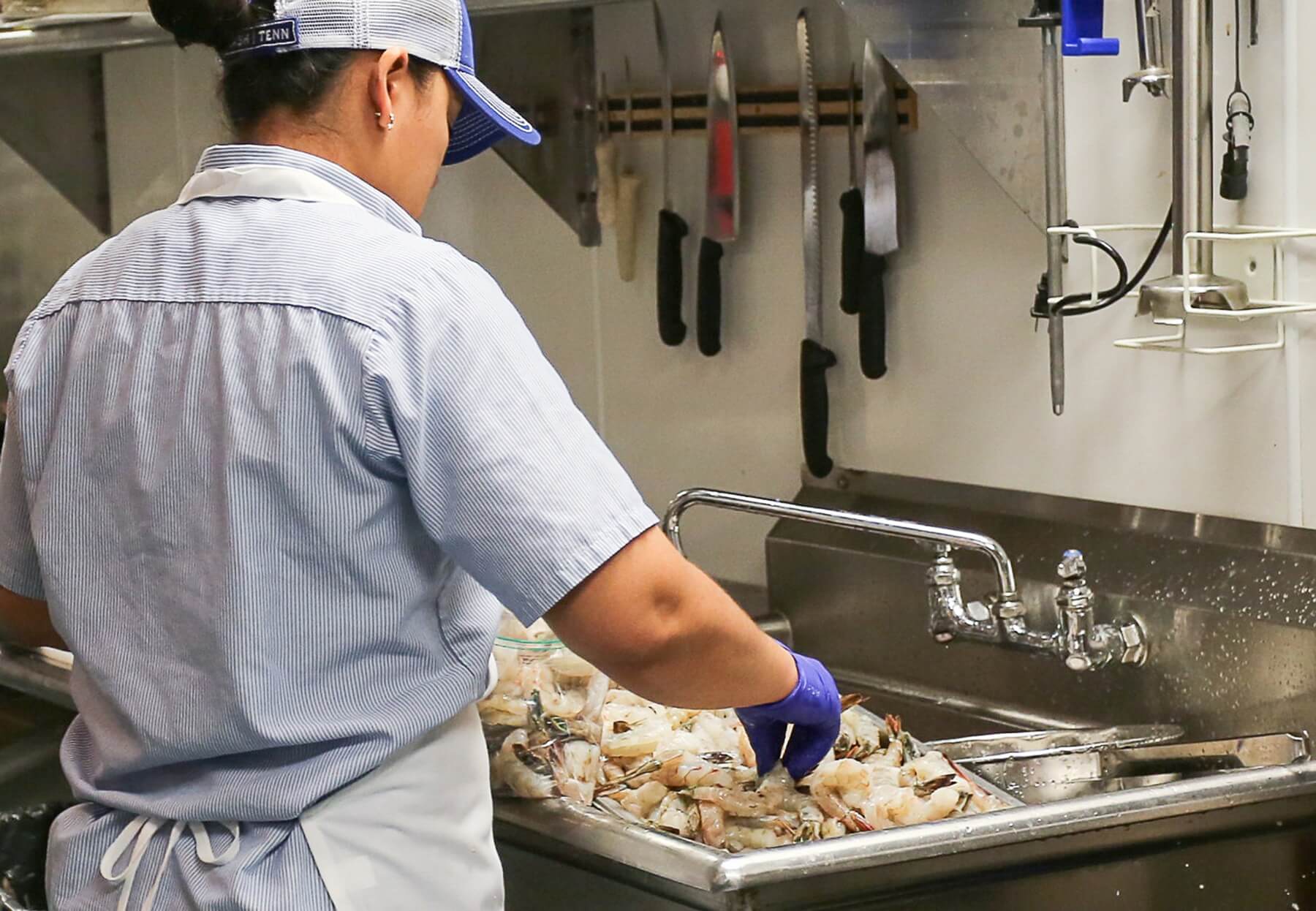

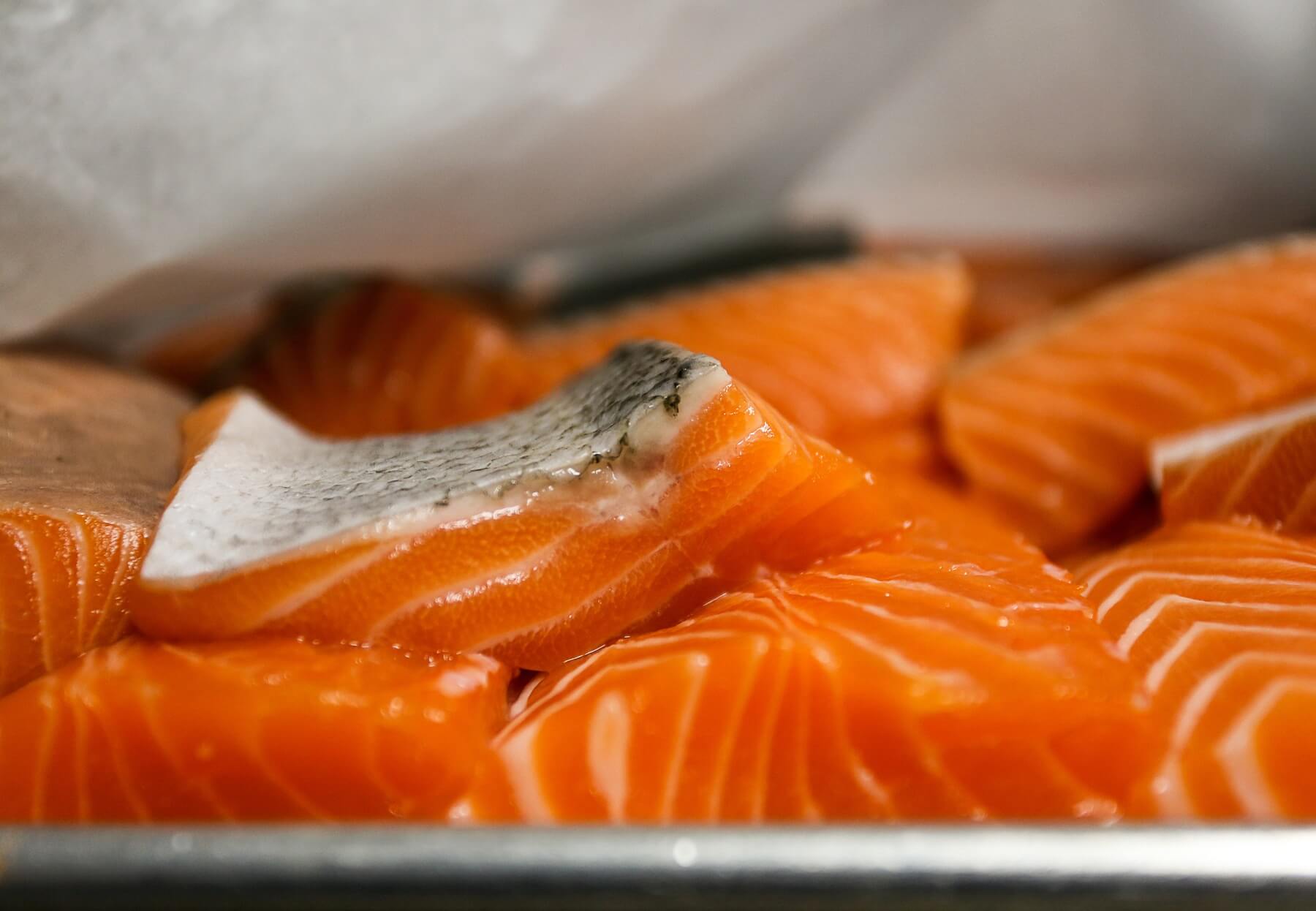
The added expense associated with quality products and sustainable products can be difficult for some customers to swallow. “It’s been a challenge to educate them on why we’re doing what we do,” admits Powell. “Diners are looking at a price tag, but we absolutely have the freshest fish in town.”
Morales expands on the issue. “FedEx has made everything coastal. When I started in the restaurant business in 1986, everything was frozen, sometimes two to three times. We could have higher sales if we went with less expensive options, but we’re not going to compromise who we are. What we’re doing is pretty aggressive, trying to serve a larger audience in a huge restaurant.”
Fin & Pearl chef Shawney Severns is relatively new to the team, but she’s been impressed by what she has discovered in the kitchen. “I grew up in Destin and lived in Jacksonville for awhile. Coming into a restaurant that is proud of and particular about the food that they use is amazing! It’s exciting to be here to learn and present the freshest possible seafood in a landlocked state.”
Unlike the fishing industry where wild caught is often more sustainable than farm-raised, when it comes to oysters, the reverse is true. “Ninety-five percent of wild oysters don’t exist commercially anymore,” explains Morales. “Farm raised oysters are so much better because the water is cleaner and they take better care of them.”
Head shucker Juan Moore is responsible for the extensive oyster program at Fin & Pearl. “Lots of people are used to Gulf oysters, but those are better for grilling or roasting. We offer different types of oysters, from both warm and cold water. Where an oyster grows really affects how it tastes — the same as with wine. We always try to have 9-12 different varieties of oysters available for our customers.”
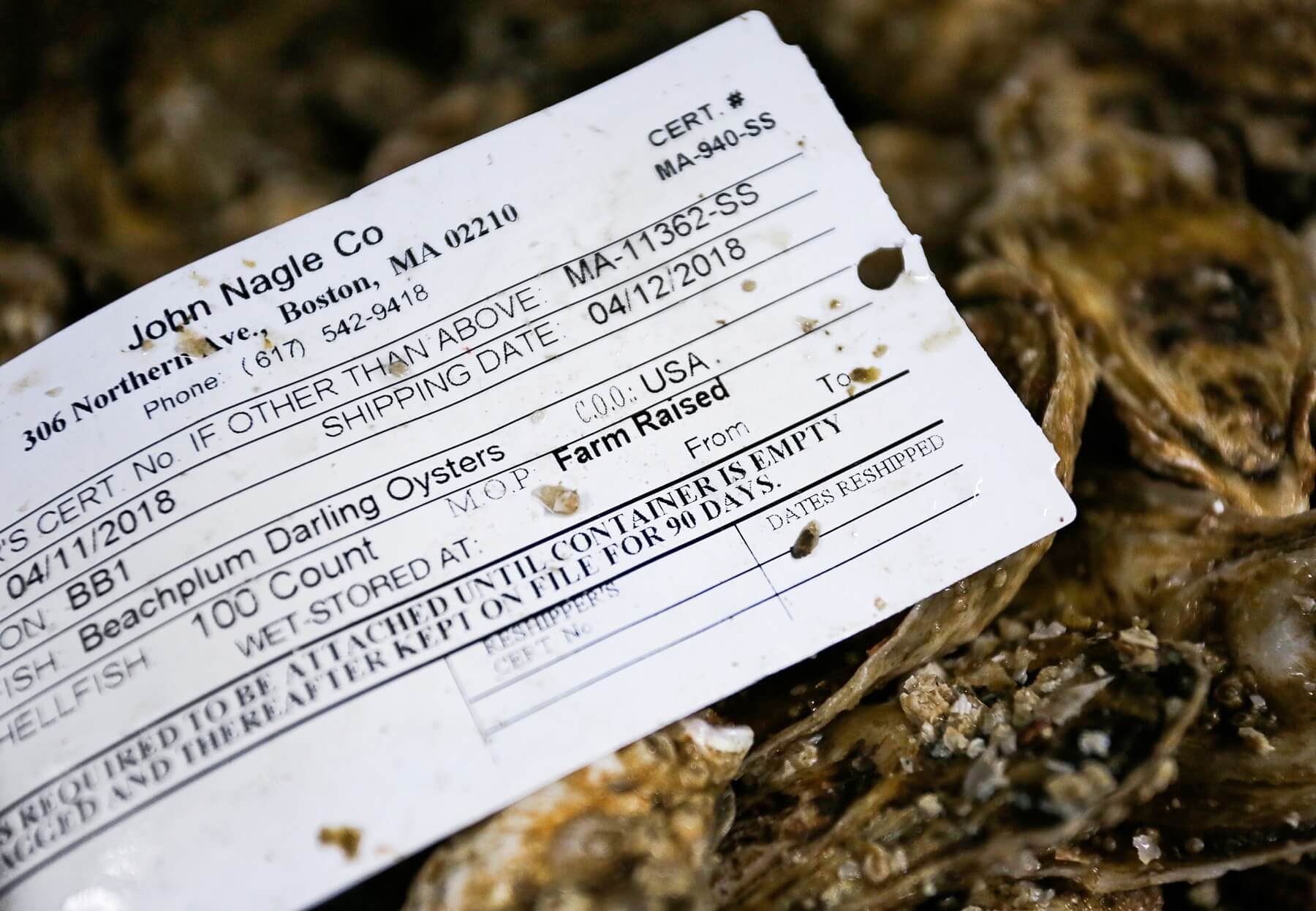

TomKats, the parent company of the Morales restaurants, has been committed to sustainable practices for years, and this dedication goes far beyond just sourcing the right seafood. “As a company, we started composting and using all biodegradable products when we were doing the catering for the movie Prince of Tides. Barbra Streisand wanted it to be an ecologically sound set, and we made it a part of our business practices.”
These practices include using a reverse osmosis water purifier to provide fresh still or sparkling water that is served in glasses made from recycled wine bottles on each table, eliminating the need for plastic water jugs. Fin & Pearl recycles their cooking oil, turning 90% of it into biodiesel fuel with a much lower carbon footprint than petroleum and converting the remaining oil into animal feed. Morales composts food waste at all of his restaurants, but Fin & Pearl is even further ahead of the ecological curve.
The restaurant employs one of the first two ORCA (Organic Refuse Conversion Alternative) systems in the state to turn their food waste into an environmentally safe water that can be returned directly to the municipal water system. “Solid compost is great,” states Morales, “but if we did traditional composting we’d still have to ship that compost to a farm 30-40 miles outside of town, and there is a carbon footprint cost associated with that. With ORCA, we don’t have to leave the property, and we drastically reduce methane production.”
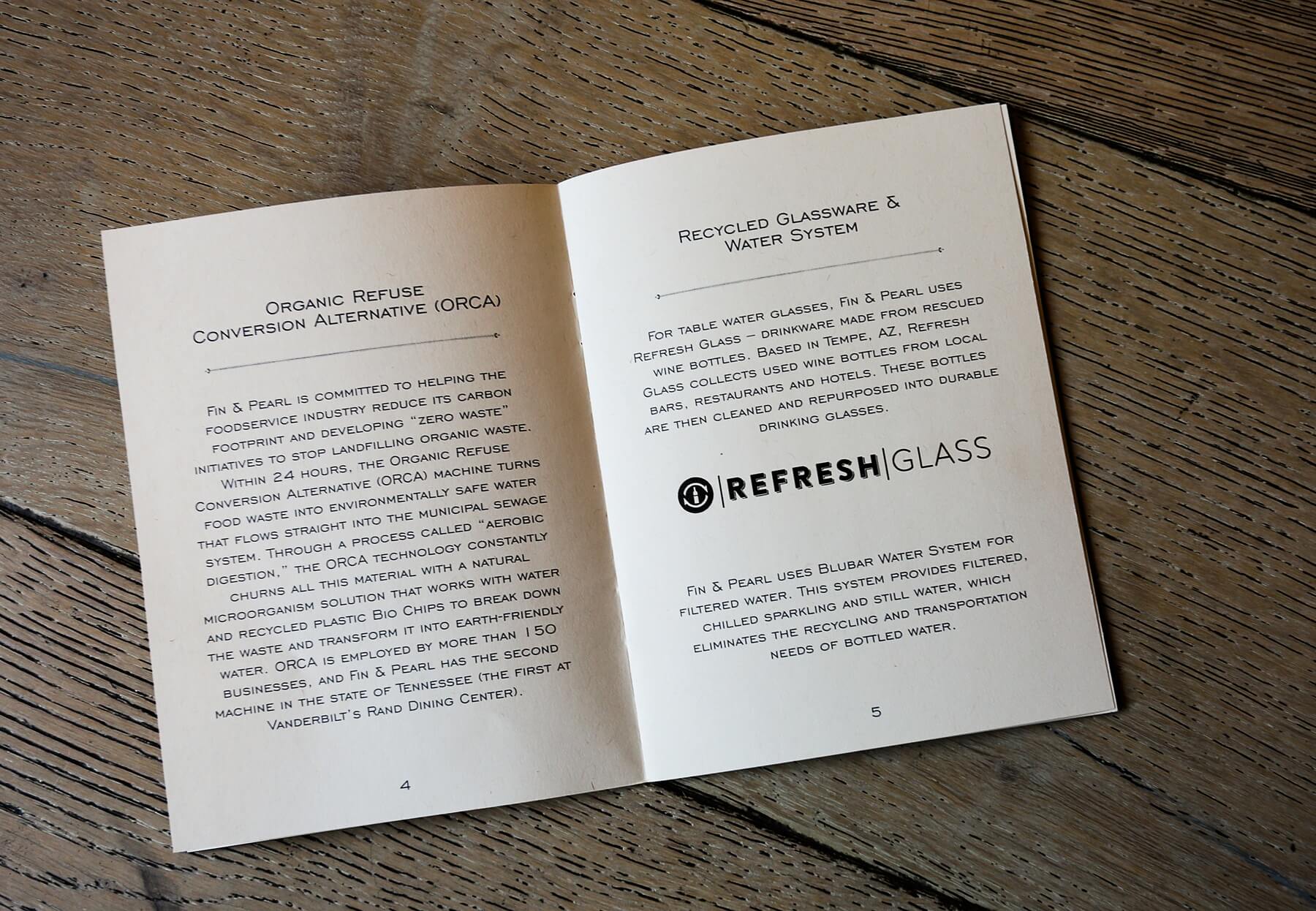
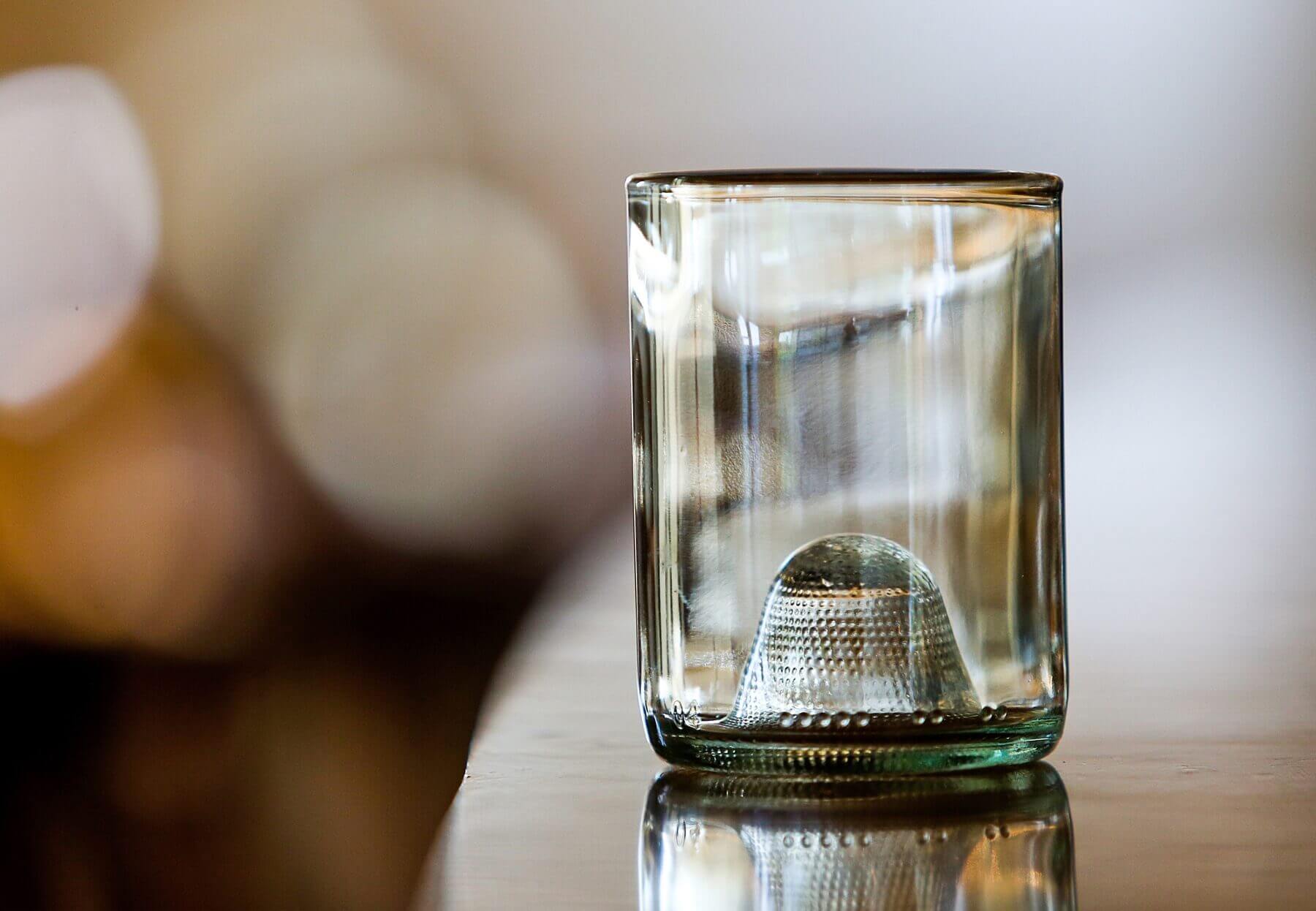
The decisions to do the right things with regard to sustainability can be difficult, and the costs associated with them can eat into the bottom line, but Morales doesn’t make these choices to attract attention or as a marketing ploy. “It’s absolutely vital for our internal culture as part of our DNA to take care of the planet so that our friends will have something to fish for in the future.” If any of those fish happen to end up in the kitchen at Fin & Pearl, you can bet that they’ll probably be delicious!
Fin & Pearl is located at 211 12th Ave. S., Nashville, TN 37208. Hours are Monday through Thursday, 8:30 a.m. to 10 p.m.; Friday, 8:30 a.m. to 11 p.m.; Saturay, 10 a.m. to 11 p.m.; Sunday, 10 a..m to 10 p.m. Learn more at finandpearl.com.
This article is sponsored by Fin & Pearl. All photography by Leila Grossman of Grannis Photography.



















